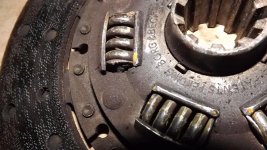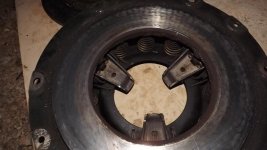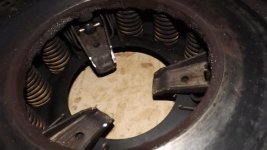James A Martin
Senior Member
Offline
Jm Martin
1962 Triumph TR3B
TCF2326L
I finally got my car on the ground and took it for a shakedown. I probably went a little too hard, downshifting into corners and accelerating out.. I lost a little speed on a hill but RPMs were still high. I turned around and headed to the shop.Ttwo miles later I had no movement with the pedal out and in gear. I thought it had something to do with the clutch operating fork after reading several posts. The symptoms were as follows: Pedal out gears not engaged. Could go through all gears and reverse with engine running. When I pushed the pedal down while in gear I got some foreward movement and some metal on metal noise. Didn't do that again. I got the car back, up on stands and removed the transmission. The peg that holds the fork on the shaft was in place, not sheared, and wired down. Then I looked in the book....
The return spring on the slave cylinder shaft is missing. It is a small spring and dosen't look like it should cause any trouble. I'm hopeing installing this will cure the problem.
I'm posting this because there might be something else I'm missing or just ignorant of. Any response would be apreciated before I reinstall the transmission as it is a bear of a job.
Thank You For Your Time
James A Martin AWS/CWI
Cell: 870.847.6154
singingwelder1y:atyahoo.com

 Hi Guest!
Hi Guest!

 smilie in place of the real @
smilie in place of the real @
 Pretty Please - add it to our Events forum(s) and add to the calendar! >>
Pretty Please - add it to our Events forum(s) and add to the calendar! >> 


